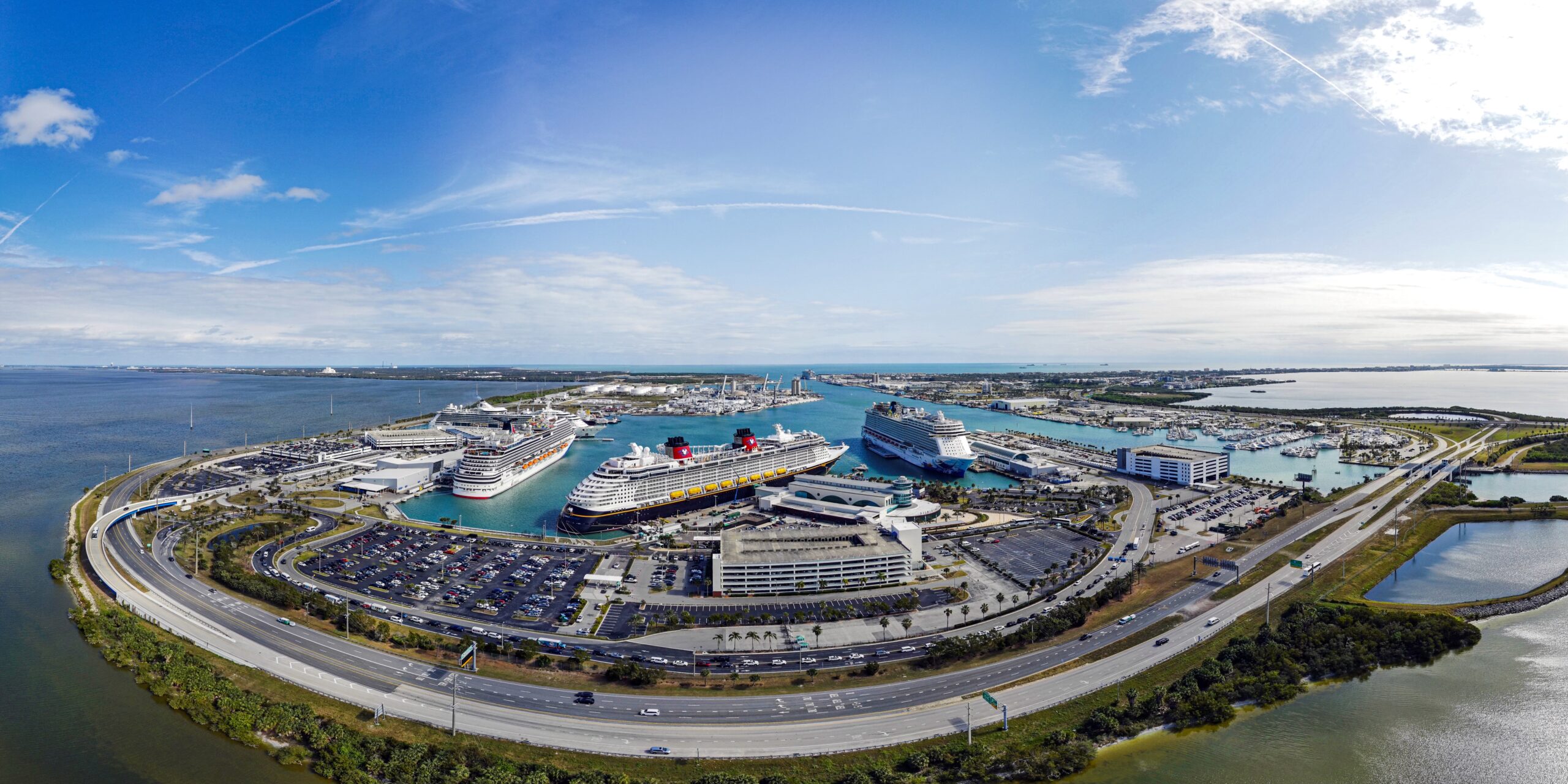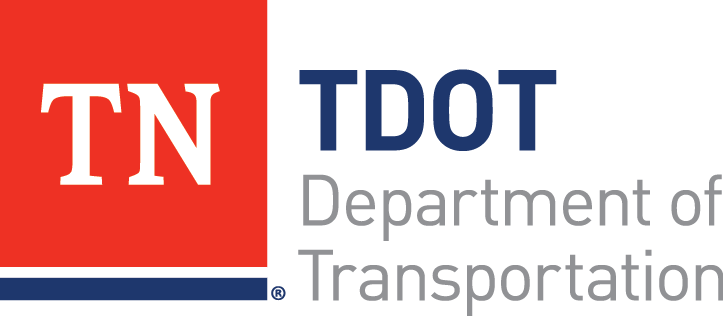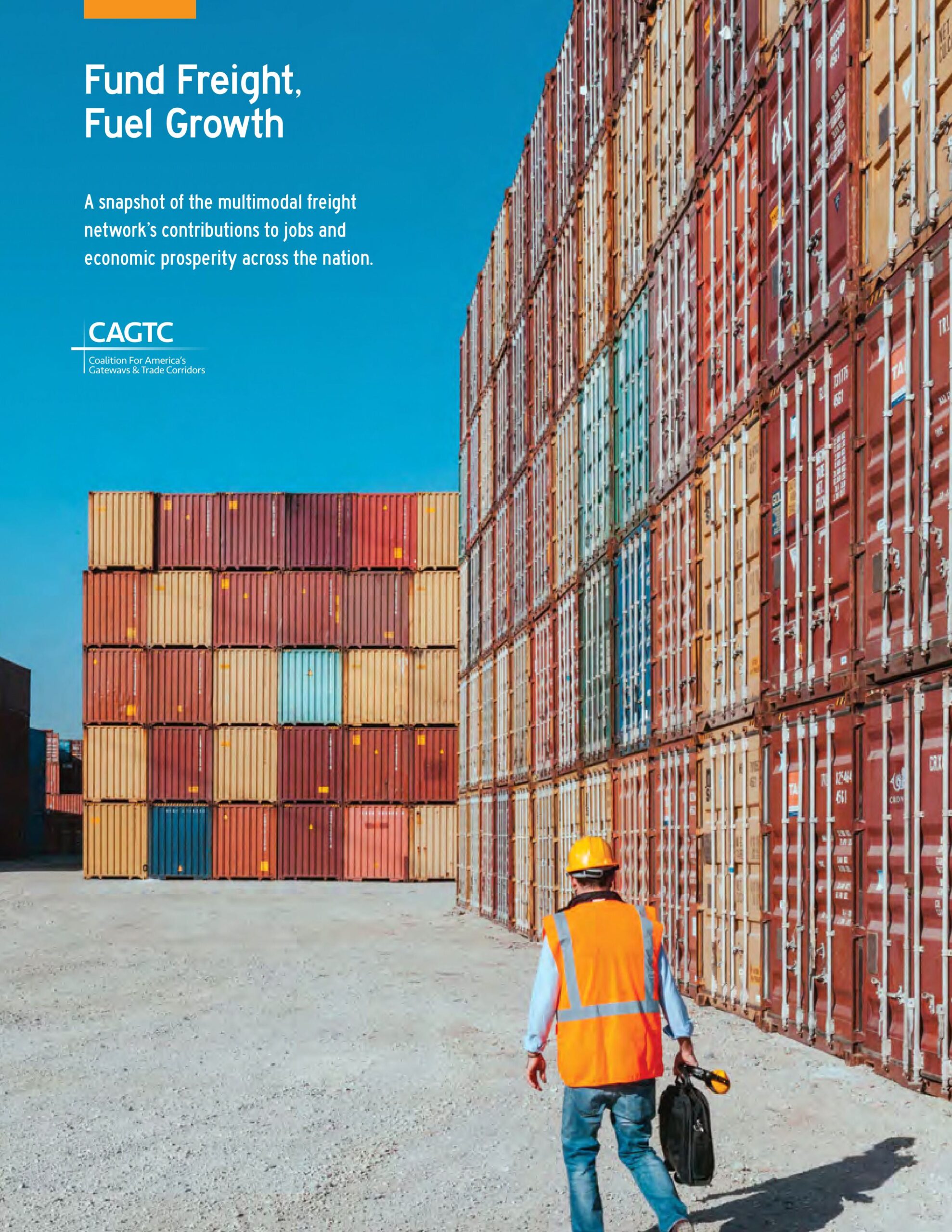In this issue:
CAGTC Annual Meeting Calls for Bold Investment in Supply Chain Infrastructure
Freight Industry Coalition Welcomes New Board Leadership
Port Canaveral: America’s Most Diverse Port
TDOT Announces Partnership for Multimodal Freight Transportation
GATX Corporation and Brookfield Infrastructure to Acquire Wells Fargo’s Rail Assets
Previous issues:
TCB Vol. 19 No. 3
03-04-25
TCB Vol. 19 No. 2
11-22-24
TCB Vol. 19 No. 1
10-31-24
TCB Vol. 18 No. 7
09-27-24
TCB Vol. 18 No. 6
07-17-24
TCB Vol. 18 No. 5
06-04-24
TCB Vol. 18 No. 4
03-21-24
The Trade Corridor Bulletin
Volume 19 – No. 4 | May 2025
CAGTC Annual Meeting Calls for Bold Investment in Supply Chain Infrastructure
By: Amanda Hampton, CAGTC Communications Manager
On May 14, freight and supply chain industry leaders from across the country convened for the Coalition for America’s Gateways and Trade Corridors (CAGTC) annual meeting in Washington, D.C. With Congress gearing up to reauthorize the nation’s surface transportation programs well ahead of the mid-2026 deadline, CAGTC’s meeting included a series of discussions highlighting the need for investment in freight infrastructure to power America’s economy, support millions of jobs, and maintain competitiveness.
In conjunction with the annual meeting, CAGTC released a new fact sheet – Fund Freight, Fuel Growth – demonstrating the multimodal freight network’s profound impact on U.S. job creation and economic growth. The fact sheet underscores the need for targeted federal investment in the goods movement infrastructure that drives our economy.
Congressional Staff Panel – An Off the Record Conversation

To kick off the meeting, staff from the relevant Congressional authorizing committees joined CAGTC for an off-the-record conversation moderated by Dr. Noel Hacegaba, Chief Operating Officer for the Port of Long Beach.
Mira Lezell, Republican Staff Director for the Subcommittee on Highways and Transit of the House Transportation & Infrastructure Committee; Jackie Schmitz, Democratic Staff Director of the House Committee on Transportation and Infrastructure Subcommittee on Highways and Transit; and Paul Wasik, Deputy Policy Director of the Senate Committee on Commerce, Science, and Transportation Subcommittee on Subcommittee on Surface Transportation, Freight, Pipelines, and Safety participated on the panel. The panelists shared insights into what their respective committee is planning for the next reauthorization bill.
The Cost of Disruption
Moderated by Eugene Mulero, Senior Reporter for Transport Topics, this panel shared perspectives on the significant and wide-ranging costs of supply chain disruption. The first half of 2025 has been marked by global trade uncertainty, shifting alliances, and an increase in freight theft.
Jon Gold, Vice President of Supply Chain and Customs Policy, National Retail Federation, and Peter Friedmann, Executive Director, Agriculture Transportation Coalition, discussed the impact of tariffs on their respective memberships, noting the high level of uncertainty as the trade landscape shifts rapidly. Mr. Gold noted that small retailers, in particular, are unable to absorb increased costs and are contemplating the viability of operations. As significant shopping events near – such as back-to-school and Christmas – retailers are contemplating how and when to move inventory. Mr. Friedmann noted that actions taken by our trading partners, in response to new tariffs, have made it more difficult for U.S. agriculture products to compete in foreign markets.
Tom Saunders, Ports America’s Head of Government Affairs noted that the uncertain long-term future of trade volumes presents challenges for private companies that invest in supporting infrastructure, as these significant capital expenditures require a measure of certainty and return.

Agreeing that uncertainty surrounding the future of international trade volumes is concerning to her members, Anne Reinke, President and CEO for the Intermodal Association of North America (IANA), also discussed the impact of cargo theft on the supply chain. The occurrence of cargo theft is on the rise, as 2024 marked a record high level of cargo theft in the United States, topping 2023’s record-breaking number. Moreover, criminals are becoming more sophisticated and more organized. She explained that the crime has also become more brazen as law enforcement lacks adequate tools to address and deter theft. Mr. Gold underscored these sentiments, and said that cargo and retail theft, likewise, are felt deeply by his association’s membership. Mr. Saunders said the problem has forced beneficial cargo owners to find creative solutions and shared an anecdote about a shoe manufacturer that now ships right footed shoes in one container, and left footed shoes in a second container to deter thieves.
Ms. Reinke said that Congress is working on solutions, such as the Combatting Organized Retail Crime Act – bipartisan legislation recently introduced by Rep. Joyce (D-OH) and Sen. Grassley (R-IA) to strengthen enforcement tools to prevent retail and supply chain theft.
Trade at a Turning Point: How Will Global Supply Chains Navigate Change

Paul Bingham, Director of Transportation Consulting for Global Intelligence & Analytics in S&P Global Market Intelligence, provided insight into the many considerations that supply chain managers are currently navigating. For example, fluctuating tariffs are leading to spikes in demand for freight services due to uncertainty. Compounding this, high interest rates are driving up the cost of capital and these numbers are likely to vary in the coming months as national debt projections shift. The cost of capital makes it difficult for importers to carry excess inventory ahead of impending tariffs. Mr. Bingham noted that, while the industry has navigated challenges in the recent past (such as COVID), the level of uncertainty and disruption is unprecedented for today’s industry practitioners. Different from the COVID-related disruptions and uncertainty, today’s uncertainty is driven by policy, making it difficult for businesses to plan for the future.
Boosting CAGTC’s Reauthorization Priorities
Following CAGTC’s annual meeting, Coalition members met with lawmakers on Capitol Hill to discuss the freight industry’s priorities for the upcoming reauthorization bill. To prepare members for these meetings, CAGTC Executive Director Elaine Nessle led a discussion on the Coalition’s reauthorization priorities. Recognizing the significant impact of inflation on the funding provided under the Infrastructure Investment and Jobs Act, CAGTC is calling for a 50 percent increase in funding for programs supporting freight infrastructure in the next reauthorization bill. CAGTC’s reauthorization platform can be viewed here.
During this discussion, panelists shared why CAGTC’s reauthorization platform is critical to their respective organizations. Ryan McFarland, Federal Government Relations Manager for the Northwest Seaport Alliance, explained that the U.S. is underspending on its freight infrastructure, noting that many competing ports in other countries receive significant government investment. Davey Kim, Senior Vice President and Principal for National Transportation Policy and Multimodal Strategy for WSP, discussed the benefits of discretionary grants for large freight projects and the importance of improving existing programs to eliminate inefficiencies. Kerry Cartwright, Director of Goods Movement for the Port of Los Angeles, flagged a specific recommendation in CAGTC’s reauthorization platform – standardizing notices of funding opportunity (NOFOs). Grant applicants would greatly benefit from a standardized NOFO since they must currently navigate shifting priorities with each new administration.
When asked how their organizations and regions would be impacted if Congress does not reauthorize freight-eligible discretionary programs, Glenn Miles, Executive Director for the Kootenai Metropolitan Planning Organization (KMPO), said projects under KMPO’s jurisdiction would suffer. Funding is essential for Idaho to expand and improve its infrastructure to accommodate the increased levels of freight traveling on its highways. Fran Inman, Senior Vice President for Majestic Realty, discussed the importance of public-private partnerships to deliver infrastructure projects, noting that the two forms of investment depend on each other to maximize the allocated funding.
Keynote Speaker: The Honorable Steven Bradbury, Deputy Secretary, U.S. Department of Transportation

Deputy Secretary of Transportation Steven Bradbury joined CAGTC to discuss the Trump Administration’s freight infrastructure priorities. Deputy Secretary Bradbury highlighted the various steps taken by the Trump Administration to prioritize freight, such as nominating Michael Rutherford to become Assistant Secretary for Multimodal Freight Infrastructure and Policy. Additionally, the President’s budget request increased funding for the Port Infrastructure Development Program (PIDP), Nationally Significant Multimodal Freight & Highway Projects program (INFRA), and Consolidated Rail Infrastructure and Safety Improvements program (CRISI).
Deputy Secretary Bradbury said USDOT is currently reviewing an unprecedented number of grant agreements for awards made under the previous Administration and he recognized the importance of accelerating this process in order to deliver funding. He said the Administration is committed to the Freight Logistics Optimization Works (FLOW) program, and in fact, is interested in expanding the program. He said the Administration is also focused on identifying and eliminating inefficiencies that exist throughout the federal permitting process.
Following his remarks, the Deputy Secretary participated in a fireside chat with Paul Anderson, President and CEO of Port Tampa Bay and CAGTC Chairman. The two enjoyed a wide-ranging conversation on the future of America’s transportation system, including the need to accelerate funding delivery and the Administration’s desire to invest in big, durable projects that support commerce.
Forecasting Freight: What Can Equipment Demand Tell Us?
Jason Smeak, AVP of Global Supply Chain & Logistics for AECOM, led a discussion about freight demands with equipment providers, who are in a unique position when it comes to navigating changes in demand, regulations, and trade patterns.

The panelists examined various trends in the industry that are impacting equipment suppliers. Spencer Pope, Manager of Grant Acquisitions for Taylor Machine Works, discussed his company’s efforts to accommodate demands for zero-emission equipment to help entities comply with state environmental mandates. Paul Titterton, Executive Vice President and President of Rail North America for GATX, highlighted the rail industry’s efforts to increase competitiveness with trucking by investing in technology that allows for real-time shipment visibility. Mike O’Malley, Senior Vice President of Government & Public Relations for Direct ChassisLink, flagged DCLI’s efforts to incorporate GPS into chassis to complement efforts in the rail industry.
When asked about the importance of grant funding, Paul Titterton discussed the benefits of the CRISI program and shared GATX’s support for expanding program eligibility to allow rolling stock owners to be directly eligible for funding. Mike O’Malley explained that federal funding is critical to their operations because expanding infrastructure will ultimately increase supply chain demand.
Promoting CAGTC’s Priorities on Capitol Hill

Following the conclusion of CAGTC’s public meeting, Coalition members traveled to Capitol Hill to share CAGTC’s reauthorization priorities and emphasize the need for continued investment in freight infrastructure.


Industry News
Freight Industry Coalition Welcomes New Board Leadership

Membership of the Coalition for America’s Gateways and Trade Corridors (CAGTC) held officer and Board of Directors elections on May 15, ushering in leaders who will guide the organization through the upcoming surface transportation reauthorization. Erin Aleman, Executive Director of the Chicago Metropolitan Agency for Planning, will transition from Vice Chair to Chair, becoming CAGTC’s sixth Chairperson in the organization’s history. Former CAGTC Treasurer Dr. Noel Hacegaba, Chief Operating Officer, Port of Long Beach was elected Vice Chair, and Tom Saunders, Head of Government Affairs, Ports America, was elected Treasurer. Each officer will serve a three-year term.
Paul Anderson, President & CEO of Port Tampa Bay, will transition to the position of Immediate Past Chair after serving a three-year term as CAGTC Chair, and prior to that, three-year terms as Vice Chair and Treasurer. Beginning his Chairmanship in 2022, Mr. Anderson skillfully navigated the organization through the implementation of the Infrastructure Investment and Jobs Act, a presidential transition, and the development of CAGTC’s surface transportation priorities for the upcoming reauthorization.
CAGTC Membership voted to add Mike O’Malley, Senior Vice President of Government & Public Relations, Direct ChassisLink (DCLI), to the Board of Directors for a three-year term. Re-elected to the Board for three-year terms are:
➢ Darin Chidsey, Chief Operating Officer, Southern California Association of Governments
➢ Dr. Noel Hacegaba, Chief Operating Officer, Port of Long Beach
➢ Jim Hagar, Economic Development Project Manager, Port of Vancouver USA
➢ Captain John Murray, Chief Executive Office and Port Director, Canaveral Port Authority
➢ Tom Saunders, Head of Government Affairs, Ports America
Read the full release here.

Member Spotlight
Port Canaveral: America’s Most Diverse Port
Now in its 72nd year, Port Canaveral is Florida’s premier seaport delivering an unmatched experience for cruise travel and cargo operations with a convenient, centralized location that serves as a gateway to major markets and top-tier destinations. With its world-class facilities, dedication to operational excellence and customer-forward approach, Port Canaveral is a maritime leader and an economic powerhouse in Central Florida and throughout the state, accounting for thousands of jobs and allowing guests to experience all that the region has to offer.

Sailing from the Space Coast
A five-time recipient of “Best U.S. Homeport” by the readers of Cruise Hive, a popular cruise-oriented web site, Port Canaveral is world’s second busiest cruise port, with year-round and seasonal cruises from popular cruise operators like Disney Cruise Line, NCL, Carnival Cruise Line, Royal Caribbean, MSC, Celebrity Cruises and Princess Cruises.
This year, Port Canaveral is on track to set a record with 8.4 million passenger movements, more than 1,000 cruise ship calls, and 16 homeported vessels. These include some of the world’s newest and largest ships, such as Royal Caribbean’s Utopia of the Seas, the Disney Treasure, Carnival’s Mardi Gras, and Norwegian’s Norwegian Aqua—the first in its Prima Plus class, which began service in April. In August, Royal Caribbean will debut the Star of the Seas, its second Icon-class ship and the world’s largest cruise ship at 250,000 tons. Looking ahead to 2027, both Carnival Cruise Line and MSC plan to launch brand new ships from Port Canaveral.
Extensive Cargo Operations
The Port is also home to extensive cargo operations, with 728 ship calls last year discharging 6.6 million tons of products, including 3.6 tons of petroleum, 1.8 million tons of aggregates, 732,000 tons of forest products, and 379,000 tons of general products. Renovations are planned for additional multipurpose, multiuser berth space on the Port’s southside, while North Cargo Berths 3 and 4 are adding 1,800 linear feet of multipurpose bulkhead space. In addition, a third mobile harbor crane is set to arrive later this year.
Taking Aerospace to New Heights
The booming aerospace industry in Florida continues to be a focal point with the Port continuing to support its commercial space partners with 212 SpaceX booster and fairing recoveries, along with a simulated booster recovery for Blue Origin, over the past year alone. The Port is also working with Blue Origin, our newest aerospace partner, on its recovery operation for their New Glenn launch vehicle, which has garnered worldwide attention.
Fun in the Sun
Port Canaveral also offers extensive recreation facilities, including Jetty Park which will undergo significant enhancements and upgrades to allow the Port to provide a fun and welcoming experience for more than 400,000 visitors, beachgoers and campers each year, while hosting a wide variety of community-focused events.
Environmentally Focused
Underscoring its commitment to sustainability, the Port has earned Green Marine recertification, piloted the National Stormwater Trust’s new smart pond technology that automatically adjusts water levels during severe weather and is a local sponsor for the $100 million federally funded U.S. Army Corps of Engineers Sand Bypass and Brevard County beach nourishment projects, as well as substantial harbor maintenance dredging, all of which was completed this month.
Committed to the Community
In addition to serving as an economic engine for the State of Florida, Port Canaveral is a valued member of the community, supporting a host of local charitable, philanthropic, and social service organizations. Its employees are committed to Brevard County, as well, donating their time, talent and treasure to local schools, charities and hosting career fairs and other events designed to attract top talent and foster interest in the maritime industry.
A Bright Future
The future is bright for Port Canaveral with record projected FY2025 revenues of $211 million that include growth in both cruise and cargo sectors, while investing hundreds of millions of dollars in enhancements that will add significant value and create a higher quality experience for guests, visitors and partners alike.

The Port continues to invest in its future with initiatives such as the Port Canaveral Advantage, a $500 million improvement program that will impact all facets of its operations. Within a five-year planning window, the program includes large-scale, high value critical infrastructure projects associated with new cruise ship arrivals, modernizing and expanding cargo berths and bulkheads, upgrading facilities maintenance, deploying new technologies and renovations to recreational facilities like Jetty Park.
Above all, Port Carnival and its team are vital members of the community, fully engaged and dedicated to providing unparalleled service for its visitors and guests and growth opportunities for its partners while making a significant economic impact locally and throughout Florida.
Member News
TDOT Announces Partnership for Multimodal Freight Transportation
 The Tennessee Department of Transportation (TDOT) has secured a public-private partnership between the state, Cheatham County, and Ingram Marine Group to develop the Ashland City River Port project. The project will enhance connectivity with more freight transportation options, reducing congestion and spurring economic growth by creating jobs and generating millions in local tax revenue.
The Tennessee Department of Transportation (TDOT) has secured a public-private partnership between the state, Cheatham County, and Ingram Marine Group to develop the Ashland City River Port project. The project will enhance connectivity with more freight transportation options, reducing congestion and spurring economic growth by creating jobs and generating millions in local tax revenue.
The project includes a multimodal, multi-commodity inland river port on a 40-acre site at mile marker 162 on the Cumberland River. Ingram Marine Group will pay to construct the $30 million inland port on the land identified by Cheatham County. TDOT will pay for the construction of the $3 million pier with state funds supporting multimodal infrastructure.
“Strategic partnerships like this represent the kind of forward-thinking solutions essential to addressing Tennessee’s evolving infrastructure needs,” said Deputy Governor and TDOT Commissioner Butch Eley. “TDOT remains committed to exploring every opportunity to strengthen our regional and national economic competitiveness by advancing infrastructure enhancements and operational innovations that alleviate congestion and remove critical freight bottlenecks.”
This port will significantly enhance the supply chain movement as it’s located within 10 miles of Interstates 40 and 65. Unlike congested waterways, there’s a low-density traffic pattern and potential for rail access to CSX via Nashville Western Railroad. In addition, barging is the most sustainable form of transportation as it causes less congestion, mitigates expensive transportation costs, and reduces air pollution.
Construction is expected to start in the Summer of 2025. Phase 1 construction will include a fixed dock, multi-commodity warehouse, and site improvements. The barges will move a variety of dry goods from the Ashland City River Port, including materials like cement, rebar, aluminum, and rubber.
Read the full release here.
Member News
GATX Corporation and Brookfield Infrastructure to Acquire Wells Fargo’s Rail Assets
 GATX Corporation (NYSE: GATX) announced on May 29 a definitive agreement to acquire approximately 105,000 railcars from Wells Fargo for $4.4 billion through a newly formed joint venture with Brookfield Infrastructure Partners L.P. (“BIP”) (NYSE: BIP; TSX: BIP.UN) and its institutional partners (collectively, “Brookfield Infrastructure”). Initial joint venture equity ownership will be GATX (30%) and Brookfield Infrastructure (70%), with GATX having the option to acquire 100% of the joint venture equity over time.
GATX Corporation (NYSE: GATX) announced on May 29 a definitive agreement to acquire approximately 105,000 railcars from Wells Fargo for $4.4 billion through a newly formed joint venture with Brookfield Infrastructure Partners L.P. (“BIP”) (NYSE: BIP; TSX: BIP.UN) and its institutional partners (collectively, “Brookfield Infrastructure”). Initial joint venture equity ownership will be GATX (30%) and Brookfield Infrastructure (70%), with GATX having the option to acquire 100% of the joint venture equity over time.
GATX’s global portfolio of assets includes tank and freight railcars, commercial aircraft spare engines, and tank containers. BIP is the flagship listed infrastructure company of Brookfield Asset Management, a leading global alternative asset manager, with over $1 trillion of assets under management.
“This is an outstanding opportunity to build on GATX’s leading North American platform,” said Robert C. Lyons, president and chief executive officer of GATX. “Throughout our 125-plus-year history, we have developed unique asset, commercial and operational expertise that positions us to acquire and integrate this fleet. Importantly, by acquiring the assets in this manner, we will maintain the financial flexibility and capacity to continue growing all of our businesses while capitalizing on the value creation opportunities inherent in the assets acquired.”
Mr. Lyons added, “We will work closely with customers to ensure an efficient transition to GATX’s commercial and operational platform. The acquisition will enhance GATX’s fleet diversification, providing additional opportunities to serve our customers. In the first full year after closing, we expect the impact of the transaction to be modestly accretive to earnings per share, with more material contributions thereafter.”
The transaction is subject to customary closing conditions, including required regulatory approvals and clearances, and it is expected to close in the first quarter of 2026 or sooner.
Read the full release here.
Research News
Transportation Grants: Applicants Cited Benefits of Combined Application, but DOT Should Improve Transparency
This month, GAO published survey results of applicant experiences with the U.S. Department of Transportation's combined processes for 3 discretionary grants under the Multimodal Project Discretionary Grant program.
Read the full report here.

